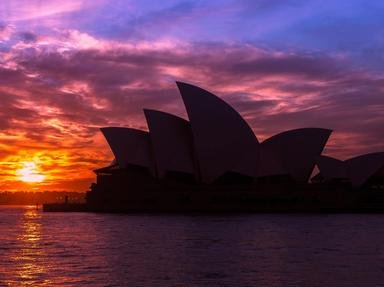Quiz Answer Key and Fun Facts
1. The Cranebrook Terraces, which are home to the oldest archeological findings in the Sydney area, is located in which Sydney suburb?
2. In 1770, James Cook first landed in Sydney's Botany Bay. What name did he originally give to Botany Bay?
3. Which of the following was NOT an issue that hindered Sydney's growth shortly after its founding?
4. Which Aboriginal leader who fought against the British occupation of the Sydney basin was killed on June 2, 1802 by Henry Hacking?
5. During the gold rush in the 1850s, Sydney struck up a rivalry with which other Australian city?
6. Soon after Australian independence, William Gocher infamously did what "scandalous" activity at Manly Beach in 1902?
7. What is the name of the New Guard member who infamously interrupted the opening of the Sydney Harbor Bridge in March 1932, by cutting the ribbon himself?
8. Which ship was sunk during an attack on Sydney Harbour on May 31, 1942 during World War II?
9. Who is Peter Hall, who made headlines in Sydney in the 1960s and 1970s?
10. At the 2000 Summer Olympics in Sydney, which Australian athlete became the very first person to both light the Olympic Cauldron and win a gold medal at the same games?
Source: Author
Joepetz
This quiz was reviewed by FunTrivia editor
gtho4 before going online.
Any errors found in FunTrivia content are routinely corrected through our feedback system.

